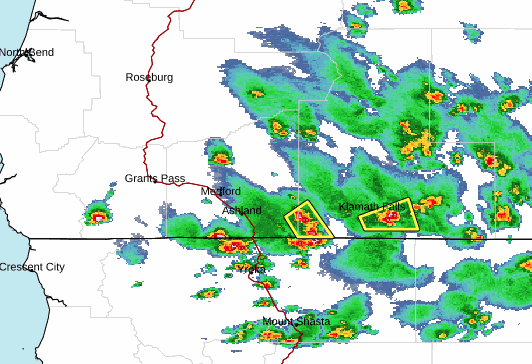GARDEN PLOTS: Foul-play by flora —Poisonous plants that make an appearance in detective fiction
Published 7:00 am Wednesday, May 8, 2024

- The author grows Narcissus poetica, poet’s daffodil, in her garden. All parts of daffodil plants contain a toxin called lycorine, which is why they have sometimes been featured in garden-related “whodunnit” fiction as means of the committed crime.
“Pretty much half the plants in the average cottage garden are toxic to some degree — but we don’t think of them as deadly poisons; to us they’re just pretty foxgloves or majestic yew trees or cheerful laurels.”
Trending
— Marta McDowell’s “Gardening Can Be Murder: How Poisonous Poppies, Sinister Shovels, and Grim Gardens Have Inspired Mystery Writers,” 2023
Here, author Marta McDowell is quoting Ruth Ware when she asked about her inspiration for writing “The Turn of the Key” (2019). In fact, Ware and many of the other mystery writers featured in “Gardening Can Be Murder” said their own gardens provide fertile ground for settings, motives, means and clues in their stories.
I have all of the plants Ware mentioned in my garden, including “the humble daffodil with enough toxicity to bring on acute vomiting if its early leaves are mistaken for green onions.” I looked up the poison daffodils contain and learned it’s called lycorine and is found in every part of the plant, with the highest concentration in its bulb.
Trending
Lycorine is present to some degree in all members of the Amaryllis family, which includes common garden plants such as belladonna lilies, naked ladies, snowdrops and snowflakes, as well as onions, shallots, garlic, leeks and chives. (The edible plants listed have low amounts of lycorine.)
As I was reading McDowell’s book, I became fascinated by all of the poisonous garden plants that have popped up in detective fiction as the means to commit the crime (or ignoble act at the very least).
For example, in Alan Bradley’s “The Sweetness at the Bottom of the Pie” (2009) — the first book of his Flavia de Luce mystery series — his eleven-year-old protagonist spikes her sister’s lipstick with essential oil from poison ivy (ouch!). The skin-irritating oil that so many people have unfortunately encountered from brushes with poison ivy and poison oak is called urushiol. It’s present in flowering plants of the Toxicodendron genus (literally “poisonous leaves”) in the sumac family.
I learned that urushiol is, technically, not a poison but an allergen; human sensitivity to it ranges from mild to severe, and about fifteen percent do not develop any allergic reaction to it at all.
Popular plants in murder mysteries are the carnivores, which trap their prey and produce digestive enzymes to extract nutrients from hapless victims. McDowell tells us that crime writer Ruth Rendell, author of the Inspector Wexford series of novels, used the Venus flytrap to carnivorous crime effect in her short story of the same name.
Similarly, H.G. Wells created a fiendish man-eating flower in his short story “The Flowering of the Strange Orchid,” published in 1894. Although no orchids are actually known to be carnivorous, one that has been a recurring suspect is the Venezuelan native Aracamunia liesneri, which has suspicious, tongue-like structures with sticky tips growing from the base of its leaves. Apparently, further investigation is needed before charges against Aracamunia are warranted.
Although orchids are not considered insectivorous, they are hosts to a predator that is. The orchid mantis, at home in the tropical rainforests of Southeast Asia, have evolved to mimic orchid flowers in order to prey upon pollinating insects. Therefore, an orchid might be considered an accessory for harboring a killer, but that doesn’t seem fair given that the mantis does away with its flower-fertilizing friends.
As with H.G. Wells, authors sometimes fictionalize characteristics of a real plant for their stories. McDowell tells us this was the case for Lloyd Shepherd, who created a botanical serial killer in his historical mystery novel “The Poisoned Island” (2013). The murderer is a breadfruit tree, Artocarpus altilis, collected by the plant explorer Joseph Banks in Tahiti and other South Pacific islands.
Breadfruit trees produce an abundance of large, starchy fruits, “which British colonial powers saw as a cheap source of calories for feeding enslaved peoples working sugar plantations in the New World.” Shepherd’s fictional Artocarpus species is out for revenge by producing hallucinogenic breadfruits that are highly addictive to those who unwittingly consume them.
Poison hemlock (Conium maculatum), a member of the carrot family (as is Queen Anne’s Lace), is another toxic plant that shows up in fiction. Elizabeth George, author of the Inspector Lynley mysteries, incorporated poison hemlock in “Missing Joseph” (1992), in which the suspect serves up a side dish of hemlock disguised as wild parsnips (also of the carrot family).
An interesting sidenote concerns a relative of poison hemlock called water hemlock (Circuta douglasii). Considered one of the most poisonous plants in North America, water hemlock contains circutoxin, so potent that eating less than one inch of the plant’s roots can kill an adult human.
The plant was named after Scottish botanist and plant explorer David Douglas (of Douglas fir fame). Douglas died in 1834, at the age of thirty-five, under mysterious circumstances while climbing Mauna Kea in Hawaii. Douglas’ mauled body was found at the bottom of a pit for entrapping cattle. The suspect was an escaped convict and wild cattle catcher named Ned Gurney, but there was never enough evidence to charge him with homicide.
Other toxic plants that McDowell includes in her book: yews (Taxus baccata) in Agatha Christie’s “A Pocket Full of Rye”; foxgloves (Digitalis purpurea) in Christie’s “The Herb of Death,” Dorothy L. Sayers’ “The Unpleasantness at the Bellona Club,” and Bradley’s “The Weed That Strings the Hangman’s Bag”; castor beans (Ricinus communis) in Margaret Truman’s “Murder on Embassy Row,” Charlotte Macleod’s “Trouble in the Brasses” and Martha Grimes’ “Jerusalem Inn”; monkshood (Aconitum) in Christie’s “4:50 from Paddington,” several of Grimes’ books, and Sheila Pim’s “Common or Garden Crime”; and rhubarb (Rheum rhabarbarum) in Marcia Rendon’s “Murder on the Red River,” Attica Locke’s “The Cutting Season,” and Naomi Hirahara’s book “Strawberry Yellow.”
According to researchers, 37% of our garden plants have medium toxicity, 9% are strongly toxic and about 5% are very strongly toxic. A useful list of poisonous plants and their levels of toxicity is available from the University of California Agriculture and Natural Resources.
With so many poisonous plants in our gardens, there appears to be no end to foul-play by flora that could be devised by creative writers of detective fiction.








